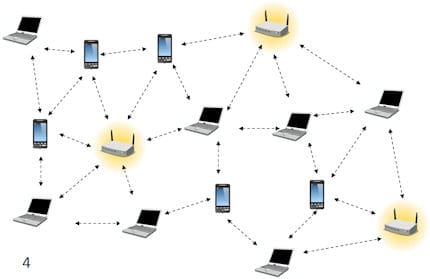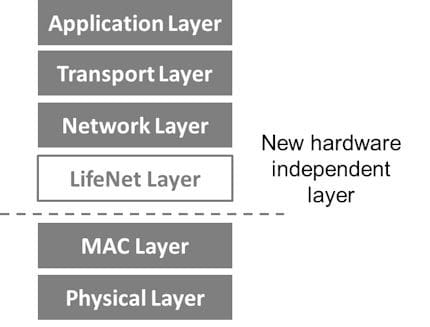One of our readers sent this to us and it is impressive. Developed by Georgia Tech to get communications up and running after disasters, it institutes a multi-path WiFi-based ad-hoc comms network that is affordable, easy-to-deploy, requires low-to-zero infrastructure, consumes little power and facilitates Internet access. It offers access to applications including chat, voice messaging, MIS systems, etc.
Traditional comms infrastructures often rely on single points of failure such as Base Transceiver Stations (BTS) or commonly known as cell towers. On a micro scale, the WiFi networks we use at work and home has the router as a single point of failure.
LifeNet, on the other hand, allows different end-user devices such as laptops, smart-phones and routers communicate with each other in an ad-hoc fashion without any intermediate governing device. Every device becomes a node and serves as a peer to all other devices. Two devices that are close by can communicate directly with each other, while communication between far off devices can be relayed multi-hop fashion by intermediate nodes using a protocol called ‘Flexible Routing.’ With LifeNet, every device functions both as a host and as a router.
In order to get all of these disparate device types to work together, they have developed a new layer in the networking stack. This design decision also simplifies the porting effort onto different RF communication technologies such as different flavous of WiFi 802.11 a/b/g/n, WiMax, etc. Once installed and switched on, devices discover one another and communicate.
Finally, it’s inexpensive. The software is free and loads on to devices already in service. In fact, it’s already been ported for use on the Android platform. Designed for disaster recovery, LifeNet could also be instituted in other environments such as a battlefield. It allows a wide area network to be set up virtually anywhere there are loaded devices. All that is required is a powered, loaded device and line of sight to another loaded device.
For full details visit thelifenetwork.org.
Thanks JA!

















































































































